| Title | Chaos;Head: Noah |
| Released | February 26, 2009 (JP 360 Original) October 7, 2022 (WW) |
| Developer(s): | MAGES. Inc. |
| Publisher(s): | Spike Chunsoft Co., Ltd. |
| Platform(s): | |
| Genre | Horror, Visual Novel, Adventure |
| Rating | M |
Completed on Steam with the CoZ patch.
HowLongToBeat Time: 45hrs Completionist | My Clear Time: 66hr 5m (All Routes)
Background
The Science Adventure series, created by Chiyomaru Shikura, is known for its complex blend of science fiction and psychological drama. The first entry in the series’ timeline, Chaos;Head Noah, originally launched as an Xbox 360 exclusive in Japan in 2008 and serves as the director’s cut of Chaos;Head. It wasn’t until October 7th, 2022, that this version was officially released outside Japan, debuting on the Nintendo Switch.
Though initially banned on Steam, Chaos;Head Noah was later approved for release after a strong fan outcry. The original translation, was widely criticized for its poor quality. In response, the well-known fan group Committee of Zero stepped in, not only reworking the translation but also enhancing CGs, videos, UI elements, and restoring censored content. Their efforts also added honorifics and various improvements to meet the standards fans had hoped for (Committee of Zero, 2023).
As the chronological starting point of the Science Adventure series, Chaos;Head Noah plays a vital role in setting up the narrative threads that continue in later entries.
The development team for Chaos;Head Noah includes:
- Masakari (Director)
- Known for: Chaos;Head, Chaos;Head Noah, Saya no Uta
- Matsubara Tatsuya (Director)
- Known for Chaos;Head Noah, Anonymous;Code, Steins;Gate.
- Hayashi Naotaka (Scenario, Planning)
- Known for Chaos;Head, Chaos;Head Noah, Steins;Gate, Robotics;Notes, Steins;Gate 0.
- Shikura Chiyomaru (Scenario, Planning; Producer)
- Known for Chaos;Head, Chaos;Child, Steins;Gate.
- Sasaki Mutsumi (Character Designer)
- Known for Chaos;Head, Chaos;Head Noah, Chaos;Child.
- Matsuo Yukihiro (Character Designer)
- Known for Chaos;Head, Chaos;Head Noah, Robotics;Notes, Chaos;Child.
- Abo Takeshi (Composer)
- Known for Famicom Detective Club: The Girl Who Stands Behind, The Missing Heir (2021, arranged scores), Steins;Gate, Chaos;Head Noah.
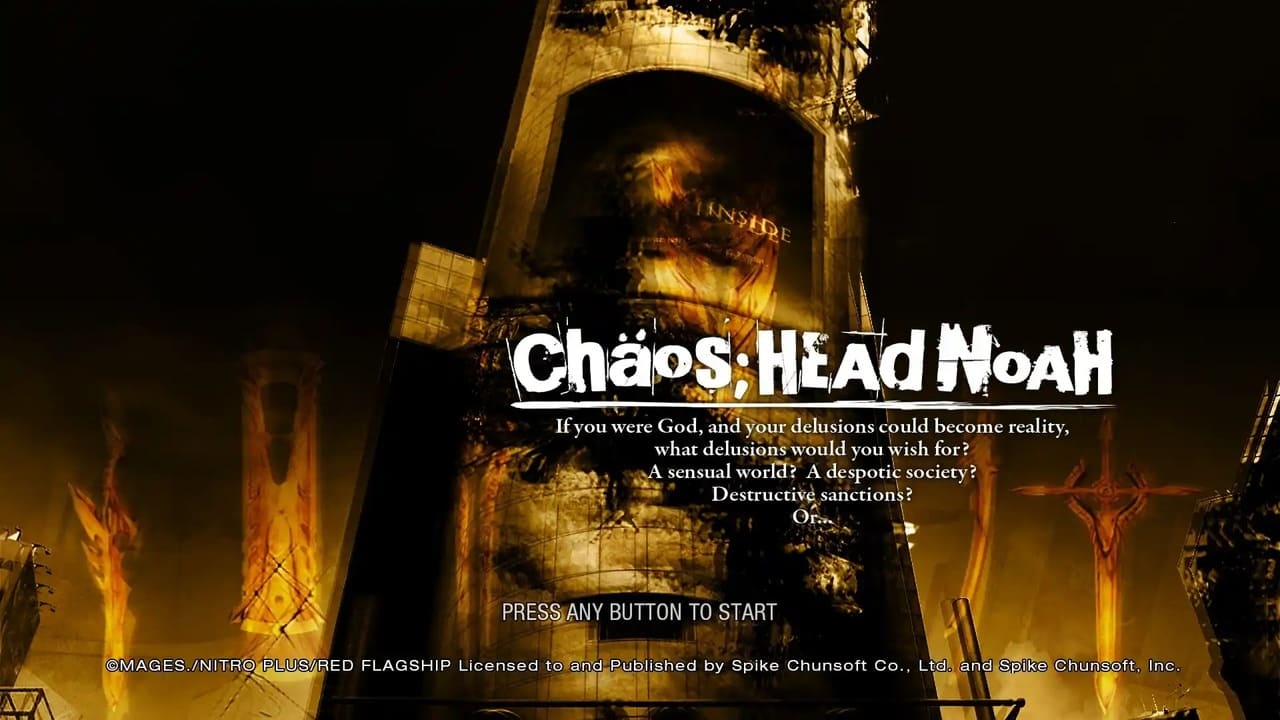
Fitting the eerie collapsed Shibuya cityscape on the Chaos;Head Noah title screen.
Experience
Before starting Chaos;Head Noah, I completed many adventure games, including the Danganronpa series, Spirit Hunter, and the Famicom Detective Club games. I’m familiar with MAGES through their renowned Steins;Gate titles, both the original anime and Steins;Gate Zero, and I’ve engaged with the broader Science Adventure universe through its visual novels. Chaos;Head Noah is my first experience with a visual novel from the Science Adventure series and my introduction to the genre in its purest form.
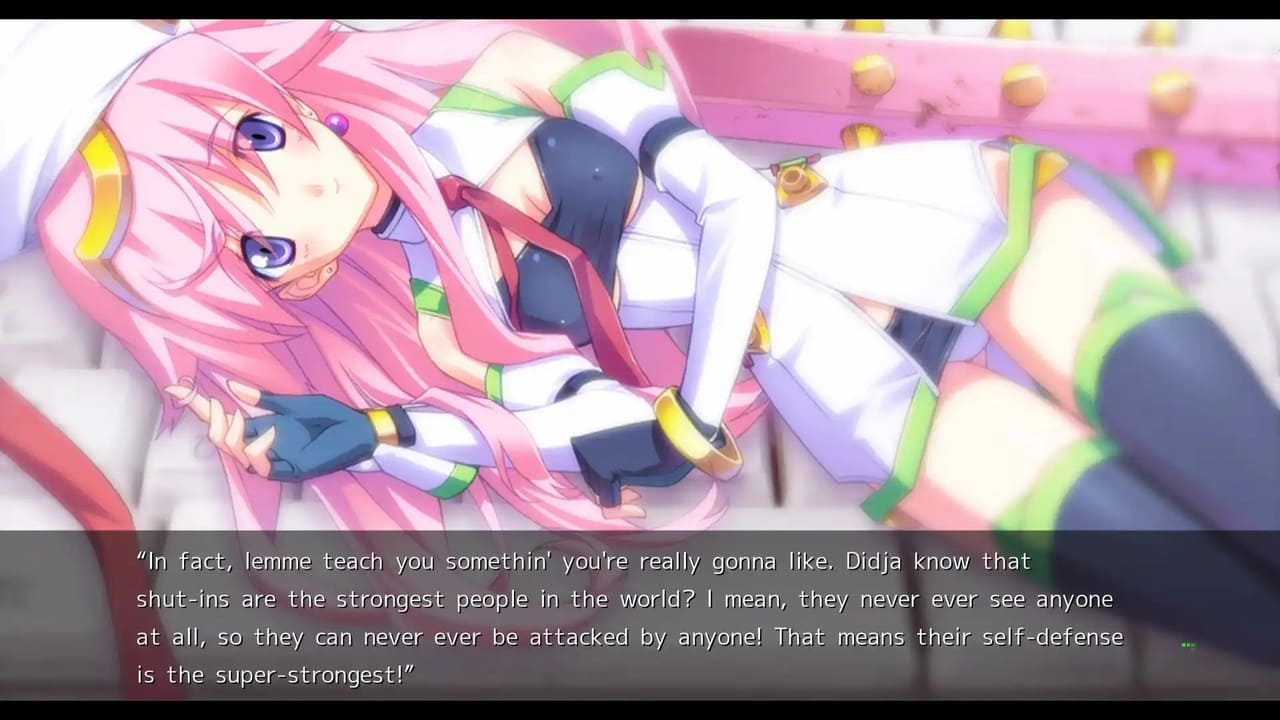
Seria appears in a delusion Taku is having, sharing her unique perspective on shut-ins.
Impressions
Introduction
The game opens with a haunting and enigmatic sequence, showcasing a ruined city drenched in rain, evoking imagery akin to Shin Megami Tensei III: Nocturne‘s conception event. The beautiful artwork by Sasaki Mutsumi, accompanied by a somber score composed by Takeshi Abo, sets the tone for a deeply psychological experience. Kanako It?’s opening theme, familiar to Steins;Gate fans, immediately draws you into this world of delusions and mysteries.
The original localization felt unsalvageable, but the best way to experience Chaos;Head Noah is through the PC version, patched with the Committee of Zero fan patch, which vastly improves the overall translation and presentation.
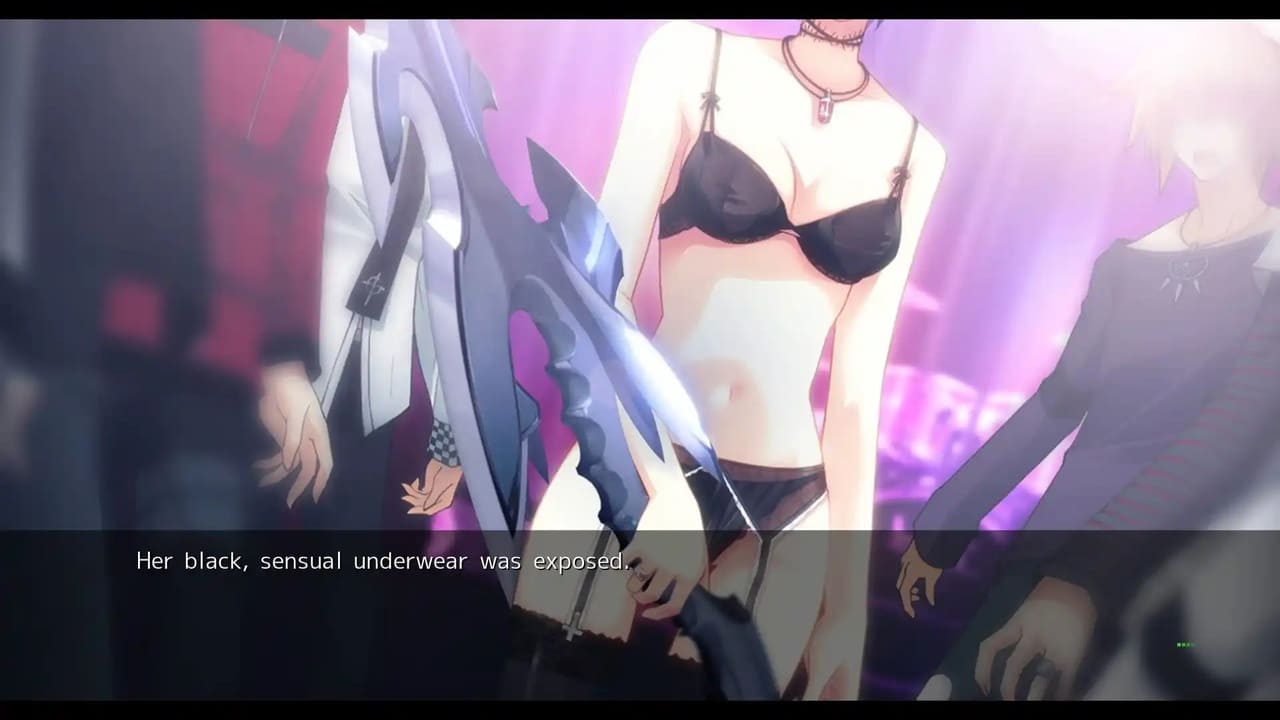
Fes appears in one of Taku’s delusions, bathed in surreal allure.
Gameplay and Mechanics
Chaos;Head Noah is a visual novel with a focus on delusions and perception. One of its most intriguing mechanics is the Delusion Trigger system. At various points, you are given the option to experience positive or negative delusions, or remain grounded in reality. These choices don’t just affect how the protagonist, Takumi, perceives the world around him, but also lead to different routes and outcomes. The system keeps you constantly guessing whether what you see is real or imagined, adding layers to the psychological horror.
Once the initial route is completed, a shortcut function becomes available in the main menu, allowing players to quickly access remaining routes and further expedite the discovery of alternate endings. This feature makes it easier to explore the game’s multiple paths without having to replay too much content. The true ending, however, remains locked until all other routes are completed, encouraging players to explore every option. To balance what might feel like a daunting task, the skip function allows you to bypass any previously read dialogue, making route progression smoother.
The game offers robust save options like quick save, quick load, and a full save system, allowing flexibility in re-experiencing different branches of the narrative. It also includes a backlog to review previous text, and a Tips List with translation notes and terms, helping to clarify certain nuances. The in-game Help section explains the Delusion Trigger system and controls, while the Config menu allows for a range of customization options. You can adjust the volume for voices, background music, sound effects, and more, sync text speed with voice acting, and even configure the voices per character.
The game also includes a range of helpful features to enhance the player’s experience:
- Config: Offers extensive customization options including voice volume, background music volume, sound effects volume, movie volume, text speed synchronization with voices, cancel voice playback at the next line, voice volume per character, key configuration, message speed, skip mode settings, wait time for auto mode, and stopping auto/skip mode at Delusion Triggers and more.
- Quick Save/Load and Save/Load: Players can quickly save and load their progress, allowing them to revisit important moments or experiment with different choices without losing significant progress.
- Backlog: A convenient feature that lets players review previously seen text, ensuring they can easily catch up on story details.
- Tips List: Provides translation notes and terms that can clarify specific elements of the game’s content.
- Help: Explains controls and the Delusion Trigger system, making it easier for players to understand and engage with the game’s mechanics.
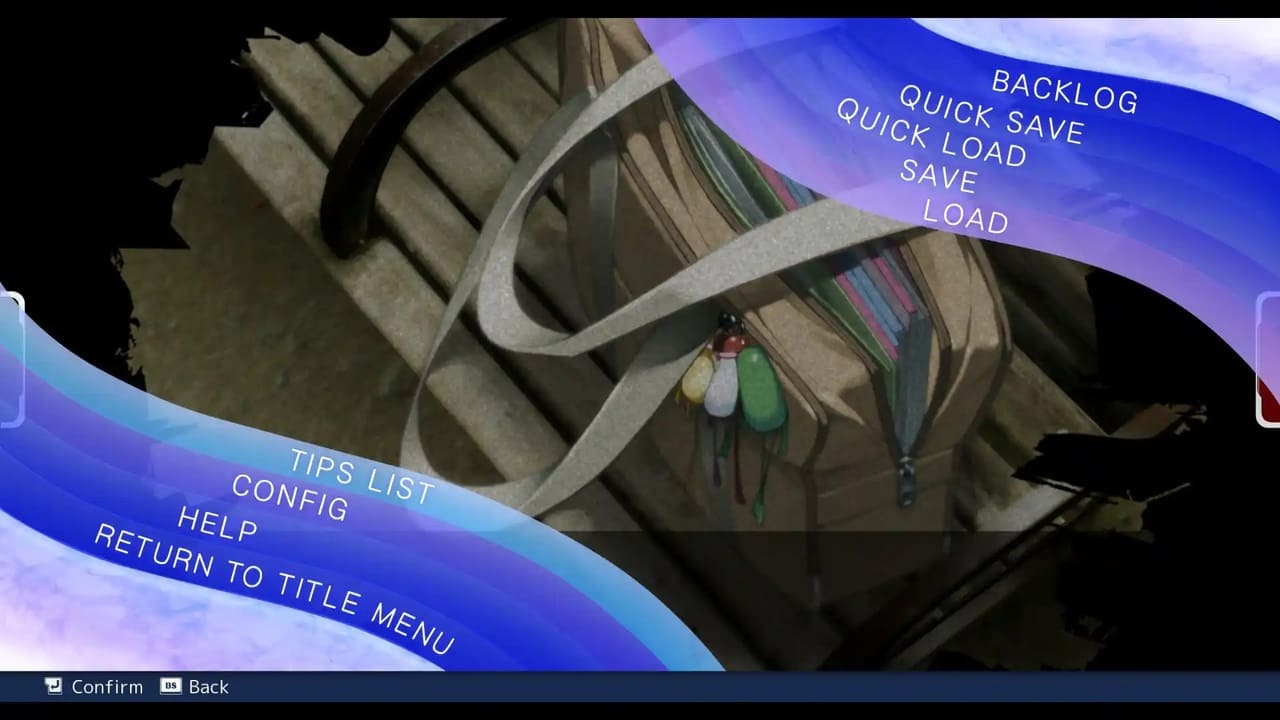
A quiet pause in a world unraveling
Character and Art Design
The art, created by Sasaki Mutsumi, delivers an unforgettable visual experience that complements the psychological horror tone of the game. Combined with Takeshi Abo’s soundtrack, the game’s atmosphere shifts between upbeat, unsettling, mellow, and energetic, perfectly matching the narrative’s emotional range. The sound design excels at drawing you deeper into the experience, with effects like crunching, crushing, and splats being so intense that some players have found them disturbing enough to quit the game. Together, the art, sound, and writing create a cohesive atmosphere that keeps you both invested and questioning what’s real.
Rimi, Sena, Yua, Nanami, and Ayase each offer unique perspectives to a story centered on delusions. The game highlights how vital perspective is, but I’ll leave the details of the characters for you to discover alongside Takumi—that’s part of the mystery. What I can say is that the character dynamics are one of the game’s strongest elements. While Kurisu Makise from Steins;Gate was once my favorite Science Adventure character, Rimi quietly stole that spot during my time with Chaos;Head Noah.
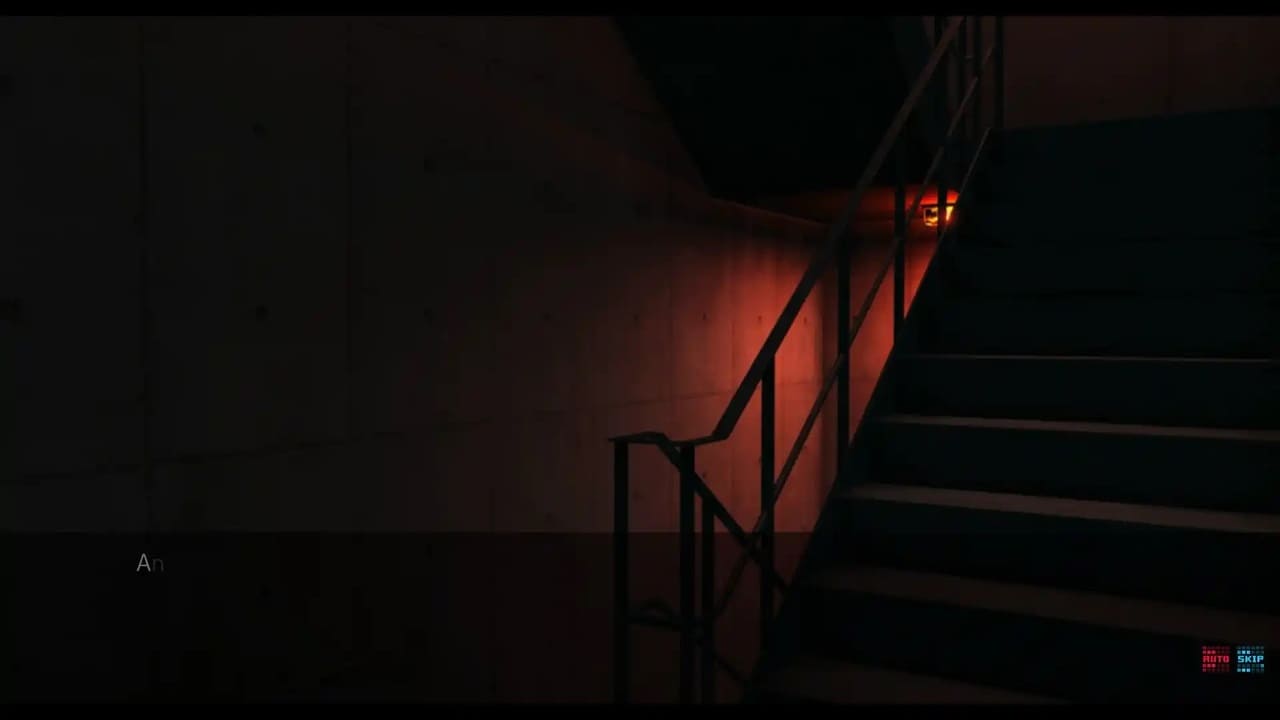
The stairwell glows ominously in red from below.
Unique Features and Moments
One of the standout features is how Chaos;Head Noah uses its branching narrative and the Delusion Trigger system to constantly challenge what the player thinks they know. These moments blur the line between reality and fantasy, making it hard to trust anything you see or experience. It adds a unique tension, where the mystery isn’t just about who the killer is, but whether any of what you’re seeing is real.
Finishing all character routes unlocks a final path that brings the narrative to a meaningful close, with one last sequence tying the experience together.
The quick save and load functions make it easier to experiment with different routes, and the Tips List provides helpful context. The game’s config options offer a lot of flexibility, from voice volume adjustments per character to auto-mode and skip settings.
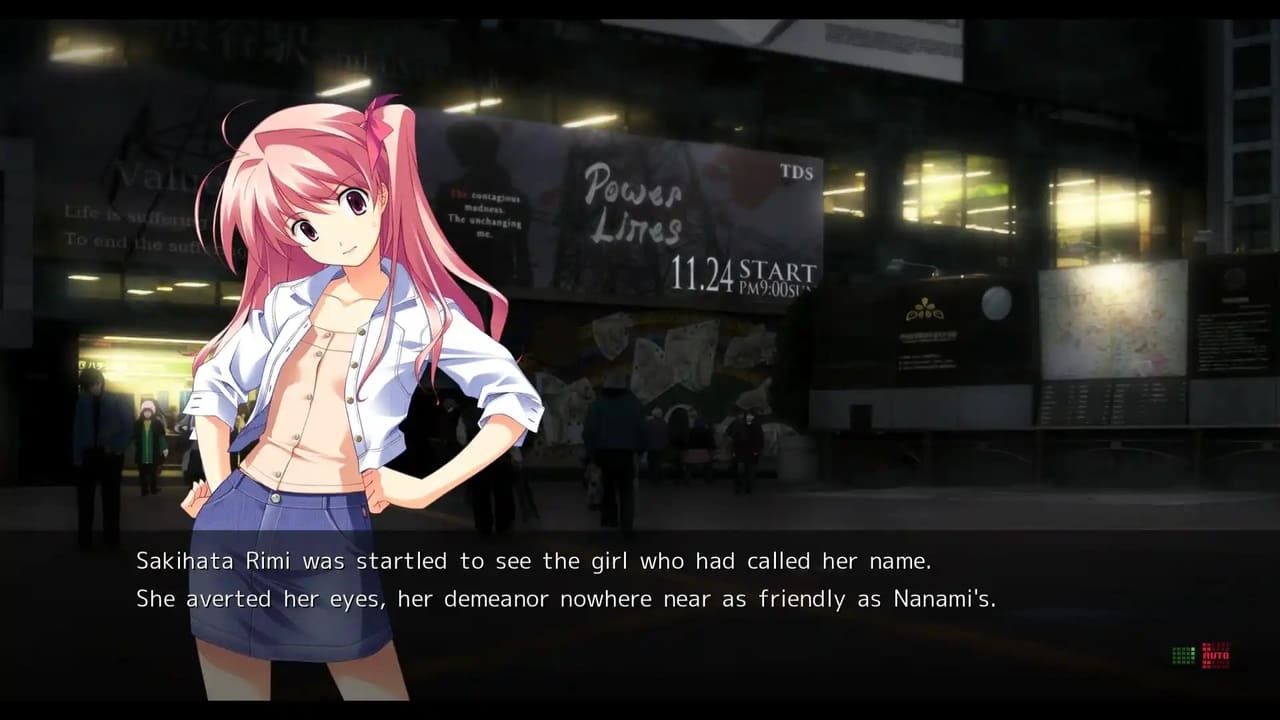
Rimi’s unease speaks louder than words.
Seiyuu Performances
The voice acting in Chaos;Head Noah adds significant depth to the experience. The Japanese-only voice track enhances the authenticity of the characters, with performances that capture the complex emotions and psychological states throughout the story.
- Hiroyuki Yoshino
- Known for Genthru from Hunter x Hunter, Franky Franklin from Spy x Family, Okada Izou from Fate/ Grand Order
- Eri Kitamura
- Known for Juri Han from Street Fighter, Sayaka Miki from Madoka Magica, Homura from Senran Kagura
- Chiaki Takahashi
- Known for Arfoire from Neptunia, Azusa Miura from Idolmaster, Litchi Faye-Ling from BlazBlue
- Hitomi Nabatame
- Known for Bazett from Fate, Yuzuriha from Under Night In-Birth, Black Swan from Honkai: Star Rail
- Ayumi Tsuji
- Known for Bernadetta from Fire Emblem: Three Houses, Eponine from Fire Emblem
- Daisuke Ono
- Known for Jotaro Kujo from JoJos, Jing Yuan from Honkai: Star Rail, Van Arkride from The Legend of Heroes
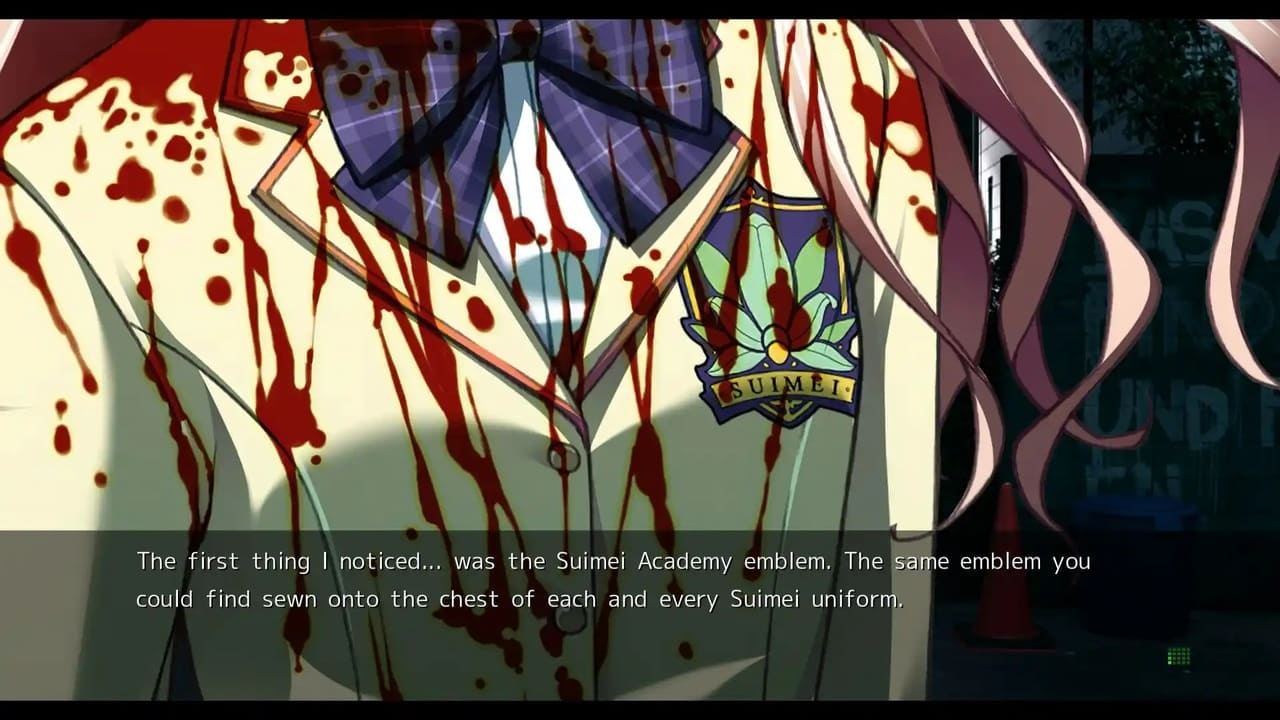
The Suimei emblem signals a dark truth unfolding.
Verdict
Chaos;Head Noah is a game that deserves its ESRB M rating for Mature, with its gory imagery and unsettling themes. It’s a visceral experience that masterfully combines art, sound, and storytelling to create a gripping psychological horror mystery. The writing is sharp, and while Takumi can be difficult to like initially, he’s written so well that by the end, you understand why his character was developed in this way. It feels like the development team drew inspiration from real-life experiences, making his journey even more compelling.
The game isn’t just a murder mystery; it’s a deeply psychological narrative about perception, delusions, and the human mind. With its Delusion Trigger system, branching routes, and strong voice performances, Chaos;Head Noah remains one of the most memorable entries in the visual novel genre, and a perfect starting point for the Science Adventure universe.
TLDR
Rating: 10/10
In Summary: Chaos;Head Noah stands out as a masterpiece of psychological horror, delivering a gripping narrative with its innovative Delusion Trigger system, stunning visuals, and haunting soundtrack. The game’s deep exploration of perception and delusion, strong voice performances, and user-friendly interface make it a standout entry in the visual novel genre. It was understandably worth the wait to experience the first canonical entry in the Science Adventure universe.
Despite the official translation’s shortcomings; playing on PC with the CoZ patch is highly recommended for the best experience due to bug fixes and other things. Despite a challenging protagonist, the game’s exceptional execution justifies its exceptional 10/10 score.
References
- Steiner. (2017, January 21). Chaos;Head Noah Xbox 360 OP – Fake Me – English Subbed. YouTube. https://www.youtube.com/watch?v=m3KRSaSs7DQ
- Committee of Zero. (2023, February 2). CHAOS;HEAD NOAH: A Note on the Translation. https://sonome.dareno.me/projects/chn-note-on-translation.html


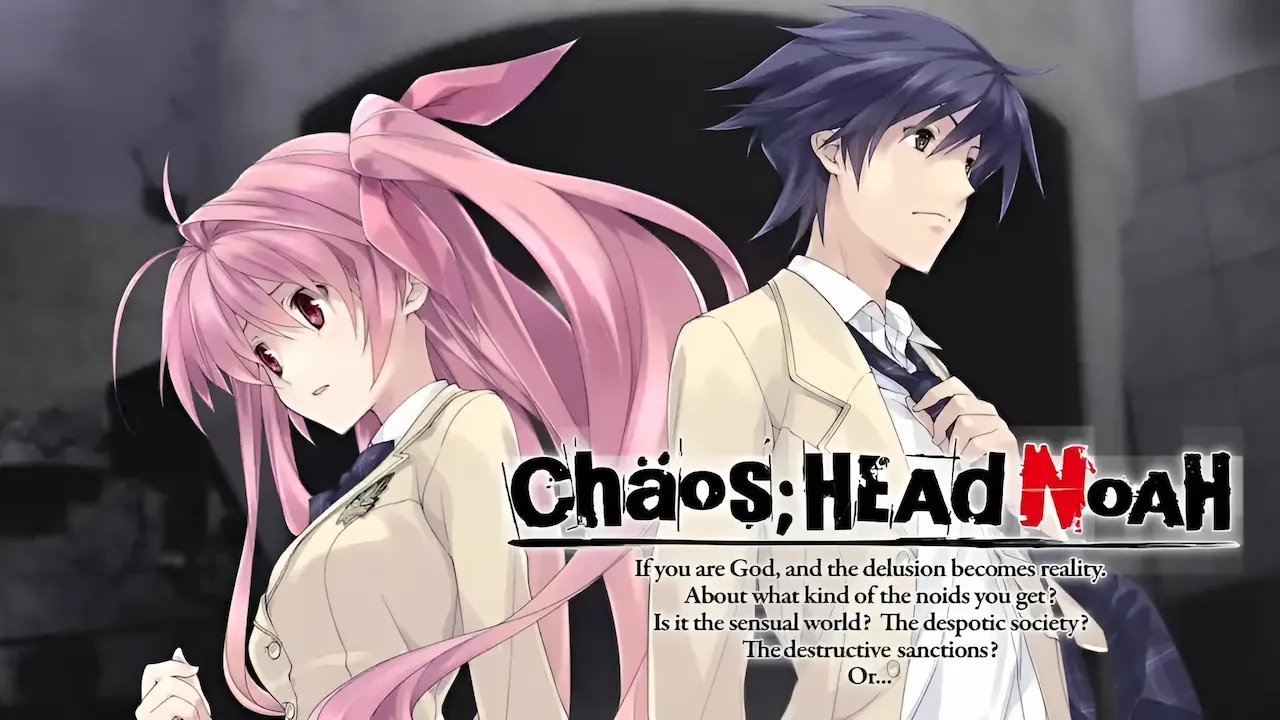
Leave a Reply